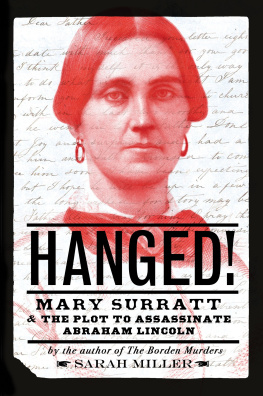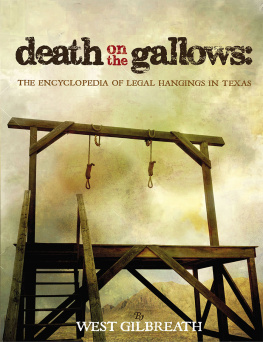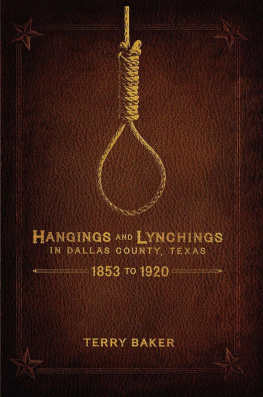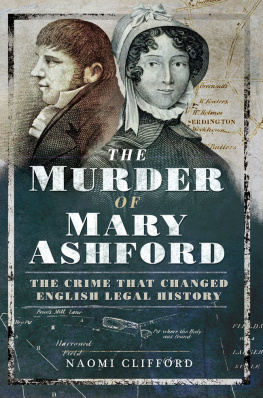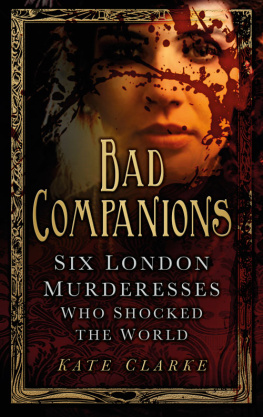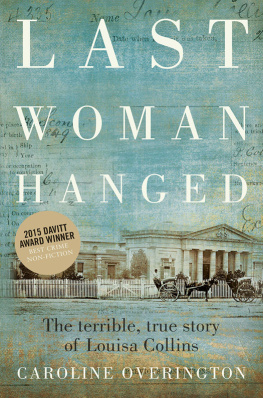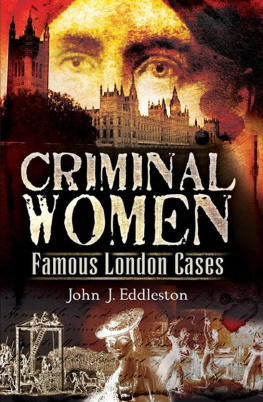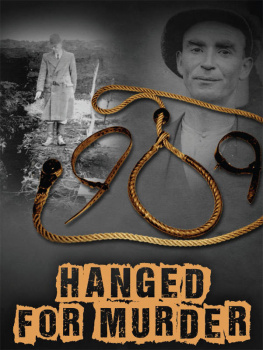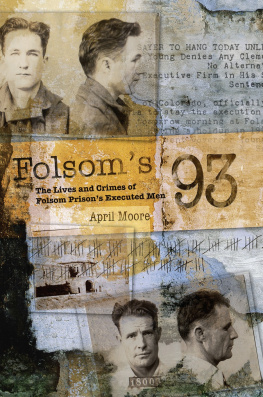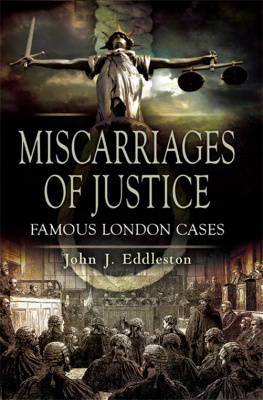
Women and the Gallows 17971837
Dedication
Dedicated to all people under sentence of death and to the memory of those who have suffered.
* * *
My aching heart with pity bled,
When poor Eliza! Clothd in white;
At Newgate dropt her lovely head,
And closd her eyes in endless night.
From a broadside published
on the execution of Eliza Fenning (1815)
Women, as they are naturally much more amiable, tender and compassionate than the other sex, become, when they pervert the dictates of nature, more remorseless and cruel, and can conceive and execute the most diabolical of crimes.
From Extraordinary Life and Character of Mary Bateman, the Yorkshire Witch (1811)
Women and the Gallows 17971837
Unfortunate Wretches
Naomi Clifford
First published in Great Britain in 2017 by
PEN AND SWORD HISTORY
an imprint of
Pen and Sword Books Ltd
47 Church Street
Barnsley
South Yorkshire S70 2AS
Copyright Naomi Clifford, 2017
ISBN 978 1 47386 334 7
eISBN 978 1 47386 336 1
Mobi ISBN 978 1 47386 335 4
The right of Naomi Clifford to be identified as the author of this work has been asserted by her in accordance with the Copyright, Designs and Patents Act 1988.
A CIP record for this book is available from the British Library All rights reserved. No part of this book may be reproduced or transmitted in any form or by any means, electronic or mechanical including photocopying, recording or by any information storage and retrieval system, without permission from the Publisher in writing.
Pen & Sword Books Ltd incorporates the imprints of Pen & Sword Archaeology, Atlas, Aviation, Battleground, Discovery, Family History, History, Maritime, Military, Naval, Politics, Railways, Select, Social History, Transport, True Crime, Claymore Press, Frontline Books, Leo Cooper, Praetorian Press, Remember When, Seaforth Publishing and Wharncliffe.
For a complete list of Pen and Sword titles please contact
Pen and Sword Books Limited
47 Church Street, Barnsley, South Yorkshire, S70 2AS, England
E-mail:
Website: www.pen-and-sword.co.uk
Preface
This book is not intended as a broad history of capital punishment. Rather, it is a collection of stories about women who were hanged in England and Wales between 1797, the year of the Bank Restriction Act which led to the deaths of scores of people, and 1837, shortly after major changes to the penal code were made. Victoria acceded to the throne in 1837, thereby ending the Georgian era.
The book is divided into three parts, starting with selected stories of women who were hanged for crimes against the person and followed by the same for crimes against property. These are broad categories of my own devising and are offered for ease of understanding rather than as definitions in law. The book ends with a chronological list of all the women who are known to have suffered the death penalty in England and Wales in the period covered here, and some details of their fates.
List of Illustrations
The manner of burning a woman convicted of treason from Jackson. W. (1795), The New and Complete Newgate Calendar (1). London: Alexander Hogg. Courtesy of Wellcome Library, London.
Dr. Syntax Attends the Execution by Thomas Rowlandson (1820). Courtesy of Yale Center for British Art, Paul Mellon Collection.
The Idle Apprentice Executed at Tyburn after William Hogarth (1768). Courtesy of Yale Center for British Art, Paul Mellon Collection.
The temporary gallows in the Old Bailey, north of Newgate. Courtesy of Wellcome Library, London.
A public execution at Newgate in February 1807, when many people in the crowd were killed reproduced in The Graphic (5 March 1910). Authors collection.
Newgate Chapel by Thomas Rowlandson, from Rowlandson, T., Pugin, A. A. (1809). The Microcosm of London . London: R. Ackerman. Authors collection.
The condemned cell at Newgate. Unknown provenance. Authors collection. Elizabeth Fry from a painting by C. K. Leslie. Courtesy of The National Library of Medicine , Digital Collections, Bethesda, Maryland, USA.
Eliza Fenning after George Cruikshank, from Hackwood, F. W. (1912), William Hone: His Life and Times . London: T. F. Unwin. Courtesy of University of California Libraries.
William Hone from Hackwood, F. W. (1912), William Hone: His Life and Times . London: T. F. Unwin. Courtesy of University of California Libraries.
Playbill for Pavilion Theatre, Whitechapel Road, London (1854). Courtesy of the JISC East London Theatre Archive project.
George Hardinge from Nichols, J. (1818). Illustrations of the Literary History of the Eighteenth Century (3). London: Nichols. Courtesy of University of Toronto Library.
Mary Morgans gravestones at Presteigne, courtesy of Bill Shakespeare ( flickr.com/photos/35721191@N08/ ).
The Coroners Jury viewing the murdered body of Margaret Hawse from John Fairburns chapbook of 1829. Courtesy of the Bishopsgate Institute, London.
The Horrid Cruelties Inflicted by Elizabeth Brownrigg upon her Apprentices from Gods revenge against murder! Or, the tragical histories and horrid cruelties of Elizabeth Brownrigg, midwife, to Mary Mitchell, Mary Jones, & Mary Clifford, her three apprentices (c.1767). London: R. Macdonald, T. Broom, J. Llewellen, and J. Herbert. Courtesy of Francis A. Countway Library of Medicine.
Execution of Esther Hibner for the murder of a parish apprentice girl, 1828 Look and Learn / Peter Jackson Collection.
William Hey by E. Scriven after Allen. Courtesy of Wellcome Library, London.
The skeleton of Elizabeth Brownrigg, displayed in a niche at the Royal College of Surgeons. Courtesy of Wellcome Library, London.
Sketch of Elizabeth Ross, from Sketches of the heads of murderers by William Clift, MS0007/1/6/1/3, The Archives at the Royal College of Surgeons England.
Eliza Ross murderess from The history of the London Burkers; containing a faithful and authentic account of the horrid acts of the noted Resurrectionists, Bishop, Williams, May etc. (1832). London: T. Kelly. Courtesy of Wellcome Library, London.
The Rotunda in the Bank of England by Edward Pugh, from Modern London; being the history and present state of the British Metropolis (1804). London: Richard Phillips. Courtesy of Wikimedia Commons.
Ann Hurle and Methuselah Spalding, from Jackson, W. (1818). The New and Complete Newgate Calendar (Volume 8). The British Library Board.
Banknotes The Governor and Company of the Bank of England.
Bank Restriction Note by George Cruikshank and William Hone, from Hackwood, F. W. (1912), William Hone: His Life and Times . London: T. F. Unwin. Courtesy of University of California Libraries.
Panorama of the Times (c.1821). Courtesy of British Cartoon Prints Collection (Library of Congress).
Robert Peel from Guy Carleton, L. (1899). The Worlds Orators . New York: G. P. Putnams Sons. Courtesy of University of Connecticut Libraries.
Millbank Penitentiary by J. Tingle after T. H. Shepherd (1829). London: Jones & Co. Courtesy of Wellcome Library, London.
Introduction
Between 1797 and 1837, 131 women were executed in England and Wales. Apart from a handful of causes clbres, psychopathic sadists and notorious husband poisoners, most of them have disappeared from history. Who were they? What kind of lives did they lead? And why were these individuals chosen to die while others who had committed felony crimes were punished with imprisonment or transportation?
Next page

